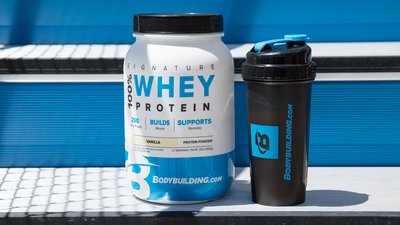Whey is derived from milk, which actually contains two proteins. Casein makes up approximately 80 percent in milk, and whey makes up the other 20 percent. When milk is turned into cheese, whey is separated from the solid curds and can be found in the liquid that is left behind.
Once separated, the whey goes through several more processing steps to become the product most people recognize. In this final form, it is a relatively tasteless powder that can be added to shakes, bars, or even baked goods. It's a common ingredient in commercial smoothies, bars, cereals, and plenty of other foods, but can also be taken on its own.
Like all proteins, whey is composed of amino acids, which the body can use for growth and tissue repair. But whey's high concentration of BCAAs, especially leucine, set it apart.
Whey is by far the most popular protein supplement because it has been shown to promote muscle growth and fat loss. It is digested and absorbed faster than other sources, in as little as 20 minutes, making it the ideal choice to consume either immediately before or after a workout.
But not all whey is equally great for you. Many are packed with sugars or other ingredients you may not want. You can’t go wrong by choosing from the best whey proteins.
Want to know more? Krissy Kendall, Ph.D., shares all the science behind this staple supplement in the article "Your Expert Guide to Whey Protein."


